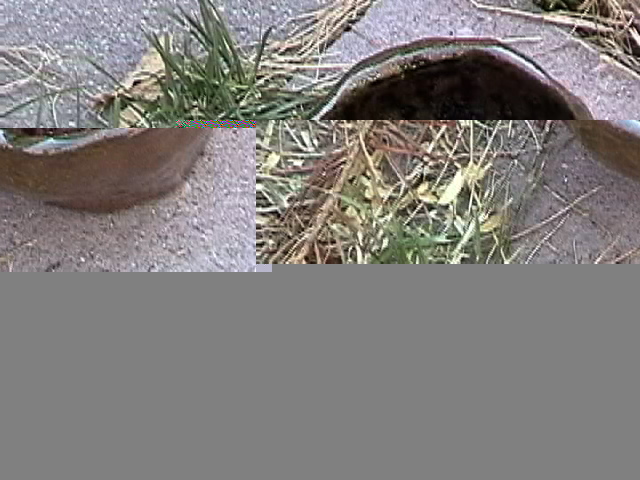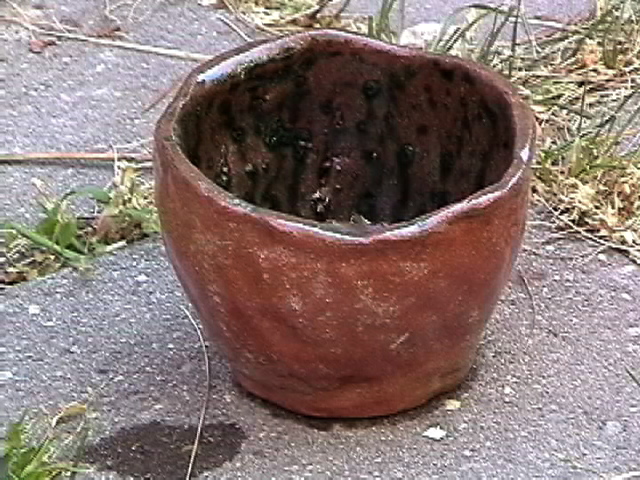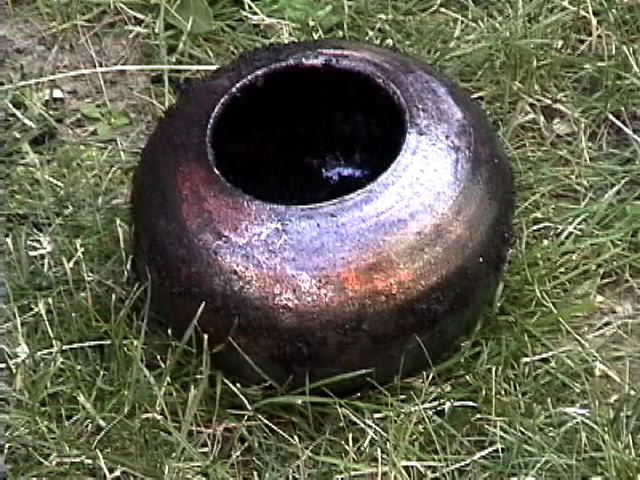Reflection Journal Web Page
Community One: Observations at the Governor's School The 2001 Institute July 22-27, 2001 Erie, PA |
| Journal created by: Deborah Young and John Fantine |
| Raku is a Japanese pottery technique which originated over 400 years ago for the purpose of being used as Ceremonial Tea Ware. Usually simplistic in form and very porous, this technique is appreciated for its aesthetic values rather than its functional use. The American style is based upon this technique however one difference is that water is introduced to the process to capture the color transformation when it has reached a desired level. |
| These pots have entered their second state of shock. Prior to being fired, they were placed from a cool state into a hot kiln with temperatures reaching 1800 to 2000 degrees F. Having survived this first shock , they have now re-entered the cool outside air. This intense change in temperature produces beautiful cracks in the glaze known as "proofmarks"- a testament of having endured the process. |
| The procees seen here is known as reduction firing. Using a very basic kiln the potter protects himself and gloves and tongs to remove the red hot vessel. He then introduces the vessel to an oxygen deprived environment which is created by an inverted bucket (metal is best...i.e. trash can or any medium sized container) containing materials such as sawdust, wood chips, pine needles, dried grass or leaves, straw, or any organic flammable material underneath. The pot remains here for only thirty seconds and is then plunged into water to stop the process from reverting to oxidation ( introducing oxygen which can shange the results of the glaze), thereby preserving the beautiful reduced effects. |
Quenching the tea cup is an American technique which was popularized in the United States around the 1950s and 1960s. One of the co-founders of this process was Paul Soldner. The result from immediately submerging the hot piece in water is a means where the creator has the ability to stop the process when the color has reached an appealing state. |
 Tea cup produced by the
Japanese method of firing. This piece was removed
from the hot kiln and allowed to air dry
naturally. Tea cup produced by the
Japanese method of firing. This piece was removed
from the hot kiln and allowed to air dry
naturally. |
Tea cup produced by the American method of firing. This piece was removed from the hot kiln and then quenched in the water when the color had reached this state. |
| Steam rises as the hot piece of pottery (approximately 1000 degrees F or more) is submerged into the water. |
This vessel illustrates the beautiful metalic effects characteristic of the reduction firing process.
|

